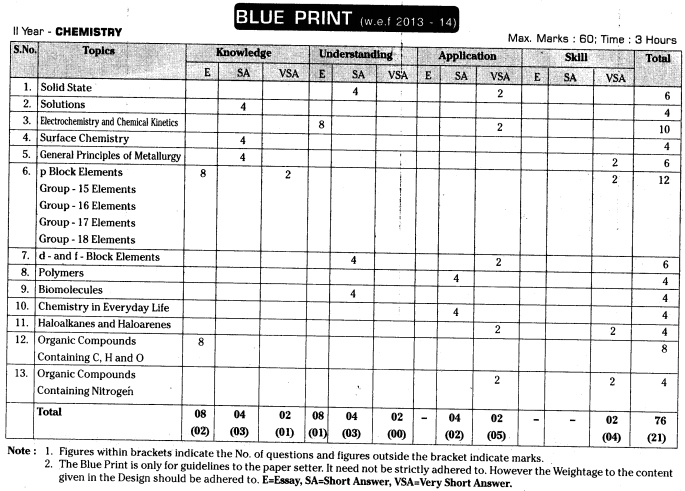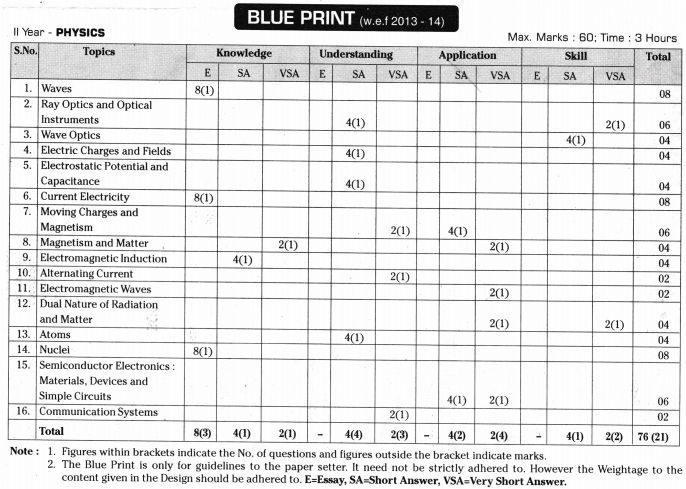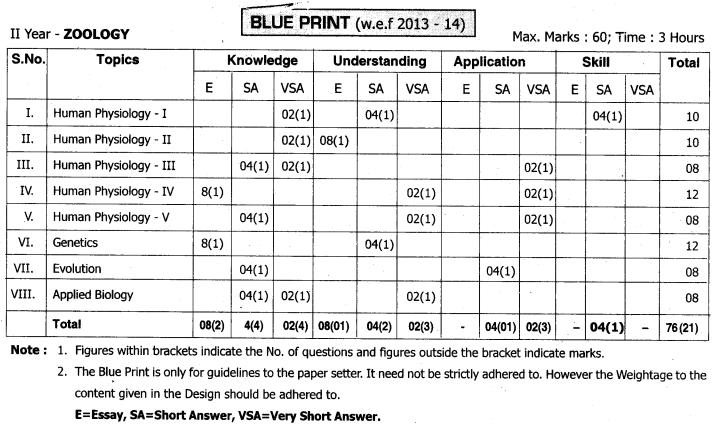Telangana TSBIE TS Inter 2nd Year Political Science Study Material 11th Lesson India and the World Textbook Questions and Answers.
TS Inter 2nd Year Political Science Study Material 11th Lesson India and the World
Short Answer Questions
Question 1
Explain any two features of Indian Foreign policy.
Answer:
Opposes Colonialism and Imperialism India’s foreign policy mainly opposes colonialism and imperialism. India expresed her solidarity with the people living in the colonies of Africa and Latin America. It strongly condemned the policy of suppression of the people in colonies. It rendered all types of asistance-political, diplomatic, and economic for achieving independence of these colonies. It also opposed the imperialist, strategy adopted by the super powers.
Opposes Racial Discrimination :
India since a long time has opposed all kinds of discrimination based on race, culture etc. It has aptly highlighted the problem of racial discrimination at international level. It has severely criticized the policy of racial segregation of the Governments of South Africa and Rhodesia (now Zimbabew).
![]()
Question 2.
Write a note on the role of Non-Aligned Movement
Answer:
NAM can be explained as a policy of not aligning with any power bloc particularly the western or the communist bloc. Pandit Jawaharlal Nehru, M. Tito, K. Sukarno, K. Nkrumah and G. Abdul Nasser were the founding statesmen of this movement.
Objectives of NAM:
- Peace and disarmament.
- Right to Self-determination of all colonial people.
- Racial Equality as a Right for everyone.
- Attaining Economic Equality.
- Opposing cultural domination or cultural imperialism.
- Support to Internationalism.
NAM Summits :
The NAM group commands the largest membership next to the United Nation Organization. India advocated idealism by refusing to join either of two camps during the Cold War. As on today it has 120 member States. The first NAM Summit was held in 1961 at Belgrade and was attended by 25 member States. The recent 16th NAM Summit that was concluded at Teheran in 2012 saw a huge participation by 120 Countries. The upcoming 17th NAM Summit will be held on 2015 at Carcass. Venezuela.
Role of NAM :
The Non-aligned movement (NAM) made significant contributions during the course of its several decades functioning. Firstly, NAM demanded the total and unconditional abolition of colonialism and supported the people fighting for the right to national self determination and independence. This resulted in decolonization. Secondly, the proliferation of NAM helped ending cold war and bipolarism with mobilization of nations of Asia, Africa and Latin America against super power rivariy. Thirdly, the NAM made the world aware of the dangerous implications of arms race (both conventional and nuclear arms race) and contributed towards achieving disarmament. Fourthly, many underdeveloped countries who are members of NAM could able to receive economic aid and assistance from both the superpowers for their development.
Fifthly, the NAM brought the principles of equality and justice in the international system and helped democratization from Euro-centric international relations. Sixthly, NAM has successfully demanded for the establishment of a New International Economic Order (NIEO) based on Political and Economic equality among nations. It has initiated the process of dialogue between developed nations and developing nations (North-South Dialogue) and cooperation among developing nations (South-South Co-operation). NAM has also made efforts for the achievement of New World Information and Communication order (NWICO), Thus the NAM played a positive role in International relations and made itself relevant to International Relations.
Question 3.
What is SAARC? Explain.
Answer:
SAARC is an acronym that stands for South Asian Association for Regional Co-operation. President Zia-ur-Rehman of Bangladesh played an important role in creating the SAARC grouping. SAARC was formally launched on 8th December. 1985 by Bangladesh, Bhutan, Indian Maldives, Nepal, Pakistan and Sri Lanka, Afghanistan became a member State on 3rd April 2007. A present the SAARC club consists of eight member States.
SAARC Objectives:
- To promote the welfare of South Asian region population by improving their quality of life.
- Strengthen collective self reliance among the countries of South Asia.
- Accelerate economic growth, social progress and cultural development
- Appreciation of each other’s problems and creating mutual trust.
- Collaboration for promoting mutual assistance in the economic, social cultural, technical and scientific fields.
SAARC Million Developmental Goals :
They are Education, Connectivity, Food Security, En-ergy Security, Terrorism and Global Climate Change.
18th SAARC Summit (Nepal – 2014):
The Prime Minister of India Mr. Narendra Modi empha-sized on co-operation in every area. It means contacts between our people and all through seamless connectivity. India visualised Trade, Investment, Assistance, Co-operation in every area through the SAARC. The Kathmandu Declaration issued on November 27th, 2014 describes the need to intensity regional co-operation on connectivity. To renew their commitment to a South Asian Economic Union, strengthen the Social Window of the SAARC Development Fund, and reiterate their commitment to free South Asia from poverty.
The first SAARC Summit was held at Dhaka in 1985, India hosted 2nd, 8th and 14th Summits in the years 1986, 1995, and 2007 respectively.
SAARC emerged as an important association towards the realization of developmental goals. One of the greatest achievements was the continuation of the organizational work. Criticism about the future was raised to the political differences of the member states. In future, a better regional integration may be realized.
![]()
Question 4.
Describe the powers and functions of General Assembly.
Answer:
General Assembly is the principal Legislative and deliberative organ of the United Nations Organization. It is called “meeting venue of the world towns”. At present it consists of 194 member States. Each member State can send five delegates, but enjoys the right of one vote on resolutions.
Functions :
General Assembly acts as a deliberate body on international affairs. It can discuss, investigate, review, supervise, recommend and criticize on the overall working of the united nations. Organizations. It performs the following functions.
- To discuss and recommend on all matters relating to the international peace and security.
- Directing and supervising the matters concerning the international social and economic co-operation.
- It considers the reports and information on the administration of non-self governing territories.
- It approves the annual budget and exercise exclusive control over the finances of the United Nations Organization.
- It elects 10 non-permanent members of the Security Council, 54 members of the Economic, and social Council, 15 Judges of the International Court of Justice, and the Secretary General of the United Nations Organization.
- It adopts all the international conventions.
- General Assembly can make the necessary Amendments, if any to the charter of the UNO.
- Takes steps to admit the states or to suspend or expel the existing member States.
Question 5.
What is the composition of the security council? Describe any TWO powers and func-tions.
Answer:
Security Council is the principal executive organ of the United Nations Organization. It consists of 15 members. Five members are known as big powers or they enjoy permanent status and veto Assembly. Of the 10 non-permanent members are elected for every two years by the General Assembly. Of the 10 non-permanent members, 5 belong to Afro-Asian Nations, I belong to East-Europe, 2 belong to Latin America and West Europe and the remaining 2 belong to other Nations.
Besides, any member State or non-member State who is party to a dispute or who is invited by the Security Council may also participate in its discussions. The Presidency of the council rotates among the member States according to their alphabetical order for a term of two months. The Security Council is assisted by three standing committees.
Powers and Functions :
Security Council enjoys considerable powers in the maintenance of international peace and security. Its powers and functions are mentioned here under:
- It strives to settle the international disputes peaceably.
- It takes preventive steps and enforces action to maintain international peace and security.
- It renders advice to the General Assembly for admitting new member States or expelling the existing member States.
- It elects the Judges of the International Court of justice and the Secretary General along with the General Assembly.
- It makes recommendations to the General Assembly on the amendment of the Charter as and when necessary.
![]()
Question 6.
Briefly describe the Powers and Functions of the Secretary General.
Answer:
The Secretary-General is the Chief Administrative Officer of the United Nations Organisation UNO. The secretary General who is appointed for a term of fine year by the General Assembly on the recommendations of the Security Council. Its main function is to execute the decisions of the main organs and specialized agencies of the United Nations Organization. The Secretariat has a staff of about 8,900 under the budget drawn from some 170 countries.
Functions of the Secretary General :The Secretary General performs many function of the United Nations Organization within the ambit of the Charter.
- He brings to the attention of the General Assembly and Security Council all the maters which threaten the international peace and security.
- He prepares the annual budget and also annual report on the working of the United Nations ” Organizations.
- He summons the special sessions of the General Assembly on the request of Security.
- He acts as the registering authority of all treaties and international agreements.
- He supervises the operations of various peace keeping forces created by the United Nations Organization on different occasions.
Very Short Answer Questions
Question 1.
What is BIMSTEC?
Answer:
The Bay of Bengal Initiative for Multi sectoral Technical and Economic Co-operation (BIMSTEC) is an organisation set up in 1997 with some of the nations of South Asia and South East Asia. The members of this organisation are India, Bangladesh, Nepal, Bhutan, Srilanka Myanmar and Thailand. The Head Quarters of BIMSTEC are located at Bangladesh (Dhaka) and the first summit meeting was held in 2004. BIMSTEC seeks to identity core areas of co-operation among the members countries.
Among them six core priority areas which cover Trade and Investment, Transport and Communication, Energy, Tourism, Technology and Fisheries identified during the ministerial conference in 1998. Later in the 8th Ministerial meeting a number of new areas of cooperation emerged which include agriculture Public Health, Poverty Alleviation, Counter Terrorism and Transnational Crime. Environment and Natural Disaster Management, Culture people to people contact and climate change.
Question 2.
Explain the 18th SAARC Summit
Answer:
The Prime Minister of India Mr. Narendra Modi emphasized on cooperation in every area. It means contacts between our people and all through seamless connectivity. India visualised Trade, Investment, Assistance, Cooperation in every area through the SAARC. The Kathmandu declaration issued on November 27th, 2014 describes the need to intensity regional co-operation on connectivity. To renew their commitment to a South Asian Economic Union, Strengthen the social window of the SAARC development fund and reiterate the commitment to free South Asia from poverty.
![]()
Question 3.
How many Countries took membership in the UN General Assembly.
Answer:
So far 194 Countries took membership in the UN General Assembly.
Question 4.
Who are the members of SAARC?
Answer:
Bangladesh, Bhutan, India, Maldives, Nepal, Pakistan, Sri Lanka, and Afganistan are the members of SAARC.
Question 5.
List the main organs of UNO.
Answer:
The United Nations Organization functions through six principal organs They are :
- General Assembly
- Security Council
- Economic and Social Council
- Trusteeship Council
- International Court of Justice, and
- Secretariate.
Question 6.
Who is the present Secretary General of UNO?
Answer:
Banki – moon is the present (8th) Secretary General of UNO.
Question 7.
Who are the members of BRICS?
Answer:
Brazil, Russia, India, China, and South Africa are members in BRICS.
![]()
Question 8.
What is Panchasheei?
Answer:
Panchasheei is the most important feature of India’s foreign policy. India adopted this feature on 29th May 1954 through an alliance with China. Panchasheei means five principles of conduct. These Principles include :
a) Mutual respect for the territorial integrity and sovereignty of the States.
b) Non-aggression.
c) Non-interference in the internal affairs of other States
d) Equality and mutual benefits, and
e) Peaceful co-existence.
Panchasheei became very popular in several States of the World. It was considered the greatest contribution made by India to international relations.


